By 2027, over 90% of global enterprises will have phased out traditional PSTN lines, according to Gartner and Ofcom’s telephony forecasts. That shift marks one of the fastest infrastructure retirements in enterprise communications history, driven not by novelty, but necessity.
Public Switched Telephone Networks (PSTN) that once powered every corporate line are reaching their operational and regulatory end. Legacy copper networks can no longer match the flexibility, cost control, or scalability that modern IP-based systems deliver. Yet, many organizations still hesitate to migrate, uncertain about reliability, compliance, and real total cost of ownership.
That’s where SIP trunking enters the equation. It offers voice connectivity over the internet with near-instant scalability and usage-based pricing, but it also introduces new considerations. from bandwidth dependencies to configuration complexity.
This guide cuts through assumptions and vendor hype. You’ll find a data-backed comparison of SIP trunking and PSTN, focusing on what actually matters to enterprise decision-makers: reliability, cost efficiency, and long-term control. By the end, you’ll know which system, or hybrid model, best fits your organization’s current and future communication strategy.
From Switchboards to SIP — A 30-Year Shift in Business Telephony
Business telephony has evolved through three major phases, each defined by how voice data travels and how easily it scales.
The journey from manual switchboards to SIP trunking reflects a broader technological and economic shift toward cloud-driven communication.
| Era | Technology | Infrastructure | Cost Efficiency | Scalability | Key Milestone |
| 1980s–1990s | PSTN (Public Switched Telephone Network) | Copper-based, circuit-switched lines | High maintenance, fixed line costs | Rigid — requires new lines for expansion | Global PSTN standardization |
| 1990s–2000s | ISDN (Integrated Services Digital Network) | Digital signaling over copper | Improved call quality and data transfer | Moderate — limited by physical channels | ISDN becomes enterprise standard for PBX |
| 2010s–Present | SIP/VoIP (Session Initiation Protocol) | Internet-based, packet-switched | 40–60% lower total cost of ownership | Elastic — instant line provisioning | ISDN phase-out in UK/EU (2025 target) |
The ISDN switch-off, announced by BT and other European carriers, marked the tipping point. Regulators and telecoms began retiring copper-based lines across the EU, the UK, and parts of Asia-Pacific — signaling a global move toward all-IP networks.
What started as an upgrade for flexibility has now become an operational mandate: to stay connected, businesses must move toward SIP and cloud telephony.
The transition isn’t just about replacing technology, it’s about aligning with how modern communication systems are designed: software-defined, scalable, and globally reachable.
How PSTN Actually Works (and Why It’s Being Retired)
The Public Switched Telephone Network (PSTN) relies on circuit-switched connections, meaning each call establishes a dedicated line between two endpoints. It’s built on a physical network of copper cables, exchanges, and analog switches that route calls through fixed infrastructure.
That design ensured unmatched reliability for decades. Voice quality was consistent, latency negligible, and service interruptions rare. But the same architecture that guaranteed stability also made PSTN inflexible and expensive to maintain.
Each new line required additional hardware, PBX systems, ISDN interfaces, and analog phones. Expanding capacity meant physically wiring new circuits, a process that’s both time-consuming and capital-intensive. According to TeleGeography, maintaining PSTN lines costs 40–60% more annually than VoIP alternatives, largely due to hardware upkeep and limited vendor availability for aging components.
As global traffic moved to data networks, PSTN became increasingly isolated. Telecoms faced the challenge of maintaining two parallel infrastructures, IP for internet traffic and copper for voice. The economics stopped making sense.
That’s why regulators and carriers worldwide, from Ofcom (UK) to Deutsche Telekom (Germany) — have announced full PSTN shutdowns by 2025–2030. The goal is to unify communication under IP networks, reducing carbon footprint, operational overhead, and legacy system dependency.
In short: PSTN still works, but it’s no longer sustainable. The era of dedicated circuits is ending, giving way to virtual, on-demand connections that scale as fast as modern business demands.
How SIP Trunking Works — Modern Telephony Over IP
SIP trunking replaces the need for traditional phone lines by transmitting voice calls as data packets over the internet. Instead of relying on physical copper circuits, it uses the Session Initiation Protocol (SIP) to establish, manage, and terminate voice or video sessions between endpoints.
At its core, SIP trunking functions as a virtual bridge between a business’s internal phone system (PBX) and the outside world. The process involves several interconnected components:
- SIP Protocol (Session Initiation Protocol) – Handles signaling: initiating calls, managing sessions, and disconnecting when a call ends.
- ITSP (Internet Telephony Service Provider) – The external provider that routes SIP traffic globally. They allocate virtual channels, assign phone numbers (DIDs), and ensure reliable voice termination.
- PBX Integration – SIP trunks connect directly to on-premise PBX systems via a SIP gateway or link natively with cloud-based PBXs. This allows businesses to keep their existing phone infrastructure while transitioning to IP.
- Call Flow and Bandwidth Allocation – During a SIP call, the audio (RTP stream) is compressed using codecs like G.711 (high quality) or G.729 (low bandwidth). Calls are routed dynamically, and available bandwidth is shared across all active sessions — enabling elastic scalability.
- Quality of Service (QoS) and Redundancy – Enterprise-grade SIP trunks prioritize voice packets over other network traffic to prevent jitter and packet loss. Leading providers like DIDlogic add geographically redundant routes to maintain uptime even if one data center fails.
This architecture removes physical limitations, allowing voice capacity to scale instantly, anywhere internet access exists. In practice, that means global offices can share one unified voice system, without regional carriers or hardware expansion.
SIP vs PSTN — Key Differences That Affect Business Operations
The transition from PSTN to SIP isn’t just technical — it reshapes how organizations handle communication costs, reliability, and scalability. The table below compares both systems across business-critical dimensions:
| Feature | PSTN | SIP Trunking | Business Impact |
| Technology Type | Circuit-switched, analog/digital | Packet-switched, IP-based | SIP supports voice, video, and messaging over one network — reducing fragmentation. |
| Infrastructure Needs | Copper lines, PBX hardware, ISDN interfaces | Internet connection, SIP gateway or cloud PBX | Eliminates physical line limits; easy remote or hybrid deployment. |
| Scalability | Fixed — each line added manually | Elastic — add or remove channels instantly | Rapid scaling for seasonal demand or remote teams. |
| Global Calling Cost | High international rates | 40–70% lower due to VoIP routing | Enterprises cut telecom bills dramatically across multi-region operations. |
| Redundancy Options | Limited — dependent on physical exchange | Built-in failover across redundant routes and data centers | Calls reroute automatically in case of local outage. |
| Maintenance & Upgrades | Hardware-intensive, costly repairs | Software-based, updated remotely | Frees IT teams from vendor scheduling and legacy dependencies. |
| Integration Potential | Minimal — standalone telephony | Natively integrates with UC, CRM, and analytics tools | Enables unified communications and contextual customer interactions. |
For example, a 50-seat contact center migrating from PRI to SIP can save up to 55% annually, while gaining centralized management and flexible routing across multiple regions.
In short, PSTN was built for stability; SIP was built for adaptability. Businesses now prioritize systems that can evolve with demand, not ones that limit it.
The Real-World Advantages of SIP Trunking
The advantages of SIP trunking aren’t theoretical, they translate directly into measurable operational and financial gains. For most enterprises, the ROI begins with the first billing cycle.
- Cost Savings
By replacing Primary Rate Interface (PRI) circuits with virtual SIP channels, businesses typically save 40–60% on monthly telephony costs (Frost & Sullivan, 2024). Traditional PRI lines charge per channel, while SIP trunks operate on a usage-based or pooled-capacity model, meaning companies only pay for what they use.
Beyond call costs, SIP removes hardware and maintenance expenses tied to PBX, ISDN cards, and on-site technician visits — reducing total cost of ownership (TCO) substantially. - Scalability on Demand
Unlike PSTN, which requires physical line installation, SIP trunks expand virtually. Adding 10 or 1,000 new call paths takes minutes, not weeks. That elasticity supports both seasonal demand spikes and rapid expansion — from onboarding new teams to integrating acquisitions under one system. - Geographic Flexibility
With global DIDs (Direct Inward Dialing) and Bring Your Own Carrier (BYOC) options, organizations can unify remote offices and customer support hubs under one international numbering system. A business headquartered in London, for example, can assign local Singapore or Toronto numbers — without setting up regional infrastructure. - Unified Communications and Features
SIP trunks enable far more than voice. They integrate seamlessly with Unified Communications (UC) platforms, CRM systems, and analytics dashboards, enabling advanced routing logic, call recording, and cross-channel visibility. That consolidation turns telephony from a standalone expense into a measurable data source for customer and sales intelligence. - Business Continuity
When physical exchanges fail, PSTN lines go silent. SIP trunks reroute calls within seconds to backup sites or mobile endpoints, keeping operations live during local outages. Redundant IP paths ensure uptime even if one carrier or region faces disruption.
In practice, SIP trunking isn’t just a modernization step, it’s a strategic infrastructure investment that improves agility, resilience, and cost control simultaneously.
Where PSTN Still Holds Value (Temporary or Regional Use Cases)
While the future of enterprise communication is clearly IP-based, PSTN hasn’t disappeared entirely. There remain niche contexts where legacy systems continue to serve a practical role.
- Low-Bandwidth or Rural Environments
In remote or underdeveloped regions, stable broadband connectivity isn’t guaranteed. PSTN’s circuit-switched reliability provides consistent call quality where internet infrastructure can’t. Businesses operating in rural logistics, agriculture, or field-based industries may retain PSTN lines as fallback systems. - Regulatory or Emergency Compliance
Certain jurisdictions still mandate PSTN connectivity for emergency call routing (E911/999) or lawful intercept requirements. Public sector organizations and healthcare facilities often keep a limited number of PSTN lines to maintain full compliance while their primary systems transition to SIP. - Specialized Analog Equipment
Some sectors rely on devices that require analog signaling, such as fax machines, elevator phones, and older security or alarm systems. Converting these systems to VoIP may not be cost-effective or technically feasible in the short term. In such cases, maintaining PSTN lines ensures functional continuity until complete digital migration is viable.
PSTN’s ongoing role is contextual, not competitive. It still provides reliability where IP cannot — but it no longer represents the long-term direction of enterprise communication. For most organizations, PSTN now serves as a temporary bridge, not a strategic platform.
Transition Planning — Migrating from PSTN to SIP Without Downtime
A successful migration from PSTN to SIP requires structured preparation, not a sudden cutover. The most resilient transitions follow a phased approach that safeguards uptime while modernizing infrastructure step by step.
- Audit Existing Telephony Assets
Start by cataloging every asset — active lines, PBX configurations, call routing logic, and hardware dependencies. This identifies what can be retained, virtualized, or decommissioned. Understanding your current call volume and routing paths ensures the new SIP system matches or exceeds existing capacity. - Choose a Hybrid Model First
Most enterprises begin with a hybrid environment, running SIP alongside existing PSTN lines. This dual setup allows gradual migration of departments or locations, ensuring business continuity. It’s also ideal for testing interoperability between new SIP trunks and legacy PBX systems. - Implement Number Porting and Failover Routes
Plan number porting early to avoid service disruption. Leading providers like DIDlogic can port large number blocks while maintaining call flow through temporary virtual DIDs. At the same time, configure failover routes — secondary IP endpoints or backup carriers that automatically reroute calls in case of network issues. - Test QoS, Jitter, and Latency
Before full deployment, run Quality of Service (QoS) tests to benchmark jitter, latency, and packet loss across all call routes. Optimal SIP performance depends on consistent network prioritization, so voice traffic should always have higher priority than general data traffic. - Train Staff and Verify E911 Compliance
Internal teams, from IT administrators to frontline staff, should understand new call handling processes, routing logic, and softphone interfaces. Verify E911 location mapping to ensure compliance in every region of operation, especially when users can work remotely.
With a controlled rollout, businesses can migrate seamlessly, maintaining full service while unlocking SIP’s scalability and cost advantages.
Cost, ROI, and Long-Term Sustainability
For IT and finance leaders, the question isn’t whether SIP works — it’s how the investment pays off over time. The value of SIP trunking emerges across three core dimensions: total cost of ownership, operational efficiency, and future-proofing.
- 3–5 Year TCO Perspective
Over a 5-year horizon, enterprises typically see telephony cost reductions of 40–65%, according to IDC. The savings stem from:
- Eliminating PRI circuits and maintenance contracts.
- Lowering per-minute and international calling rates.
- Reducing administrative overhead from managing separate systems per site.
SIP’s pay-as-you-grow pricing also minimizes idle capacity costs, something fixed-line PSTN contracts couldn’t achieve.
- Energy and Hardware Savings
Traditional PBX and ISDN systems consume significant power and require on-site cooling. Moving to SIP and cloud PBX environments can cut energy consumption by up to 30% (Telecom Energy Report 2024), aligning IT infrastructure with corporate sustainability goals. The shift also eliminates the need for hardware replacements, cable management, and physical line maintenance. - CAPEX vs OPEX
PSTN systems lock organizations into CAPEX-heavy cycles, investing in hardware, line expansions, and replacement parts. SIP reverses that model into OPEX, allowing predictable monthly costs tied to actual usage. This flexibility supports remote expansion, mergers, or seasonal scaling without large upfront spending.
ROI Checkpoint Questions
Before finalizing migration plans, CFOs and IT leaders should assess:
- Have we mapped the 3–5 year TCO comparing SIP and PSTN maintenance?
- Can we consolidate all office sites under one global SIP provider?
- What percentage of our telecom spend is still tied to fixed-line contracts?
- Do we have network redundancy and QoS policies ready for rollout?
- How will SIP integration improve our CRM, UC, or analytics visibility?
Answering these questions ensures migration isn’t just a cost-cutting move, it’s a strategic shift toward long-term resilience, agility, and financial control.
FAQs
Can SIP and PSTN run together during transition?
Yes. Many organizations deploy a hybrid model, running SIP trunks alongside PSTN lines to ensure business continuity. This setup allows gradual migration without disrupting existing call flows.
How do call quality and reliability compare?
When configured with proper QoS and redundancy, SIP can match or exceed PSTN quality. Modern codecs like G.711 and G.729 ensure clear, consistent audio across stable internet connections.
Is SIP secure enough for enterprise-grade communication?
Absolutely. Enterprise SIP trunks use TLS and SRTP encryption, plus provider-level firewalls and fraud monitoring. Security depends on configuration — with proper setup, SIP is as secure as any corporate VoIP or UC platform.
What happens if internet fails during a SIP call?
Calls can automatically reroute through backup data centers or mobile endpoints. Leading providers like DIDlogic build network redundancy across regions to maintain uptime even during local outages.
Are emergency services (911/999) supported over SIP?
Yes, but they require proper E911 mapping to route calls to the correct local authority. Compliance should be verified per region before full migration.
What’s the average setup time for SIP trunks?
For most enterprises, SIP trunk provisioning takes 1–5 business days, depending on number porting volume and existing PBX configuration. Once active, scaling or adding channels is instant.
Conclusion — The Future Is IP-Based Telephony
PSTN has served businesses reliably for decades, but reliability alone no longer defines communication success. SIP trunking offers adaptability, scalability, and global reach, aligning with how modern enterprises operate: across geographies, networks, and digital platforms.
The telecom landscape is in irreversible transition. By 2030, nearly all voice traffic will run over IP networks, supported by cloud-native infrastructure and AI-driven routing intelligence. Companies that migrate early gain cost control, flexibility, and resilience, while those holding onto legacy systems face rising maintenance costs and limited interoperability.
The future of business telephony isn’t about replacing calls; it’s about reinventing connection.
Further Reading
- What is SIP trunking?
- SIP trunking capacity
- SIP trunking security
- Differences between SIP trunking and cloud PBX
- Differences between SIP trunking and telephony
- Differences between SIP trunking and IP trunking
- SIP session vs SIP trunk
- Differences between SIP Trunking and Session Border Controllers
- SIP Trunking vs H.323
- Advantages of SIP Trunking
- SIP Trunk Costs
- SIP Trunking Migration Plan
- SIP Trunking Requirements










